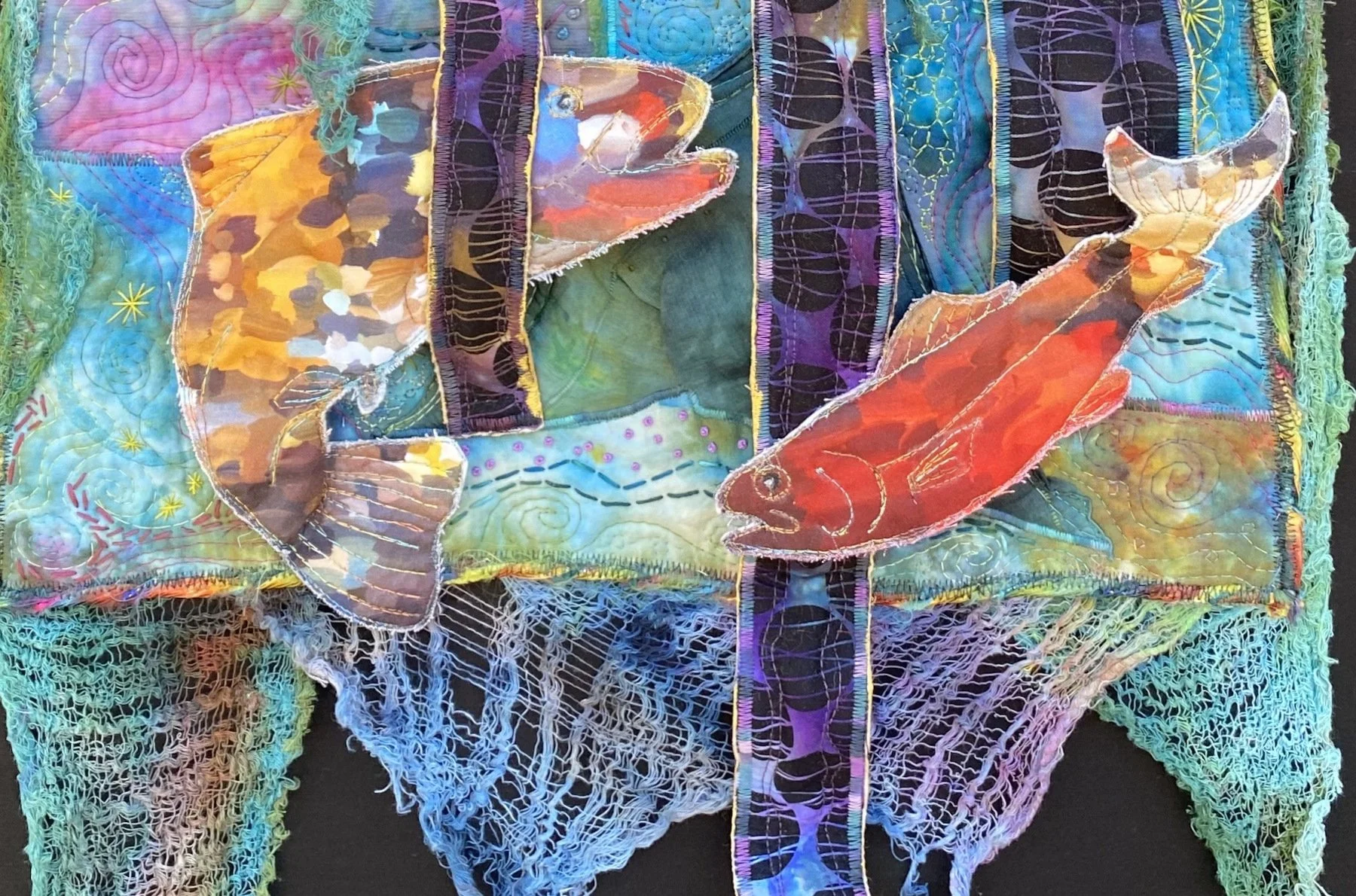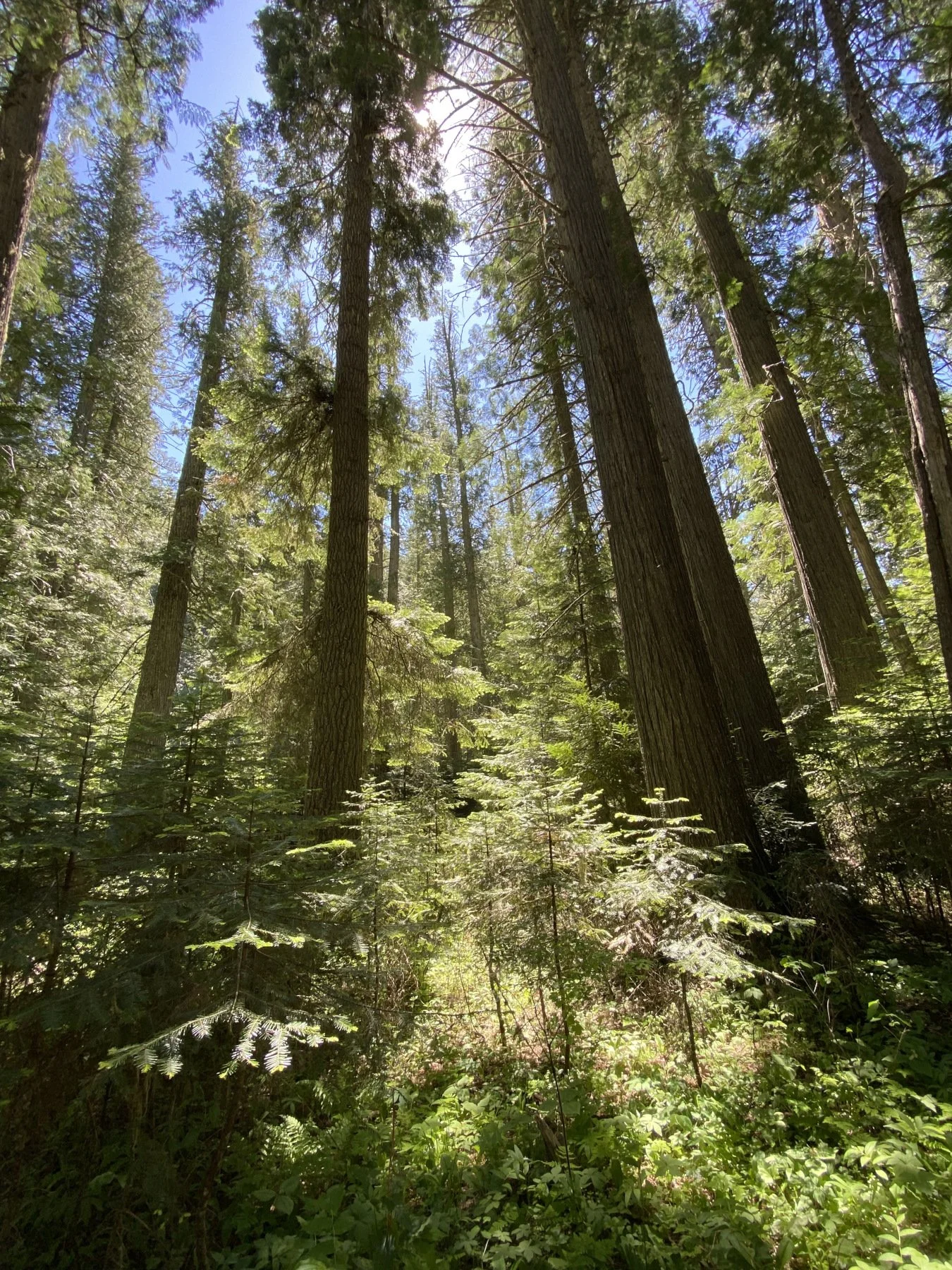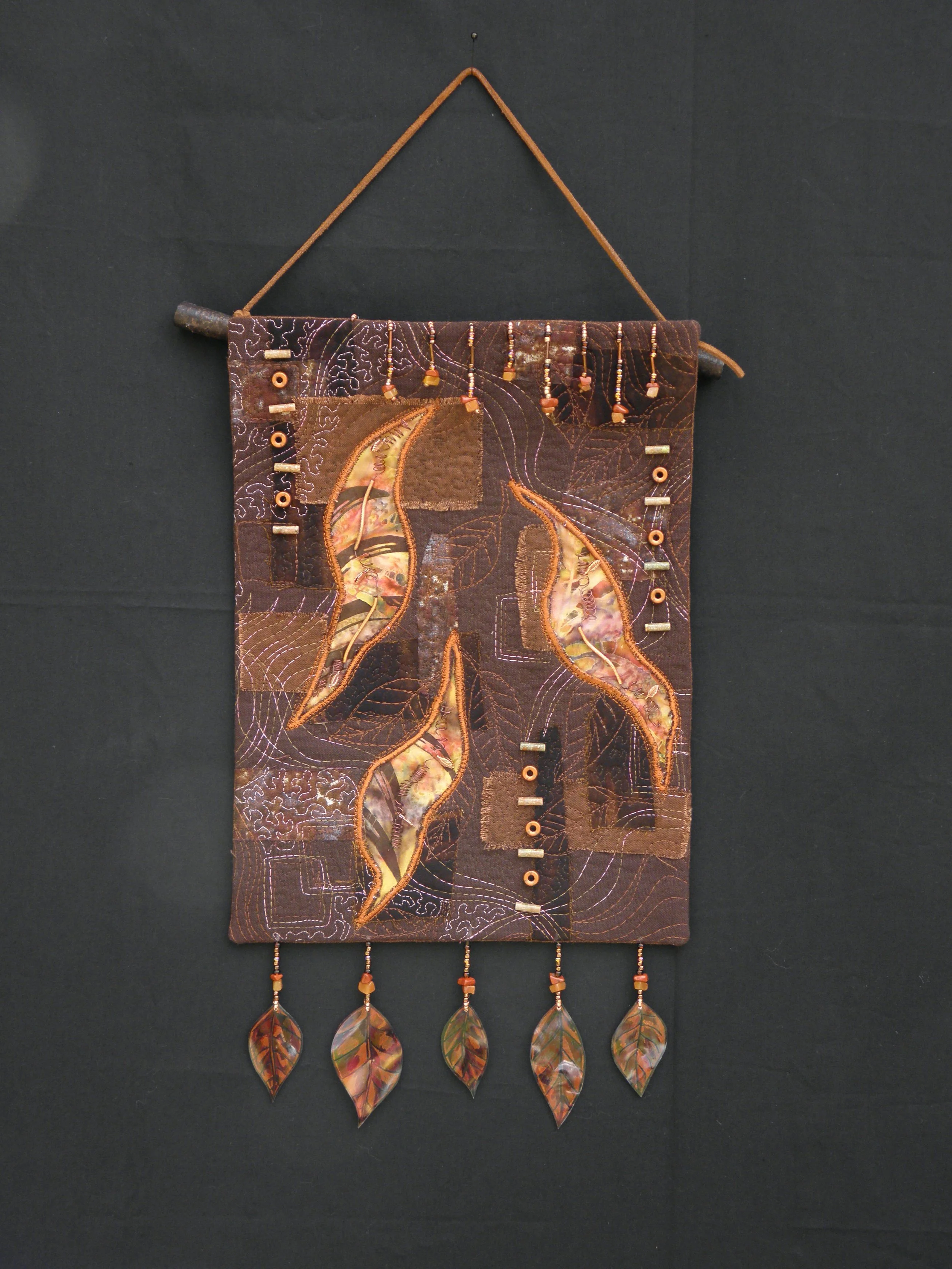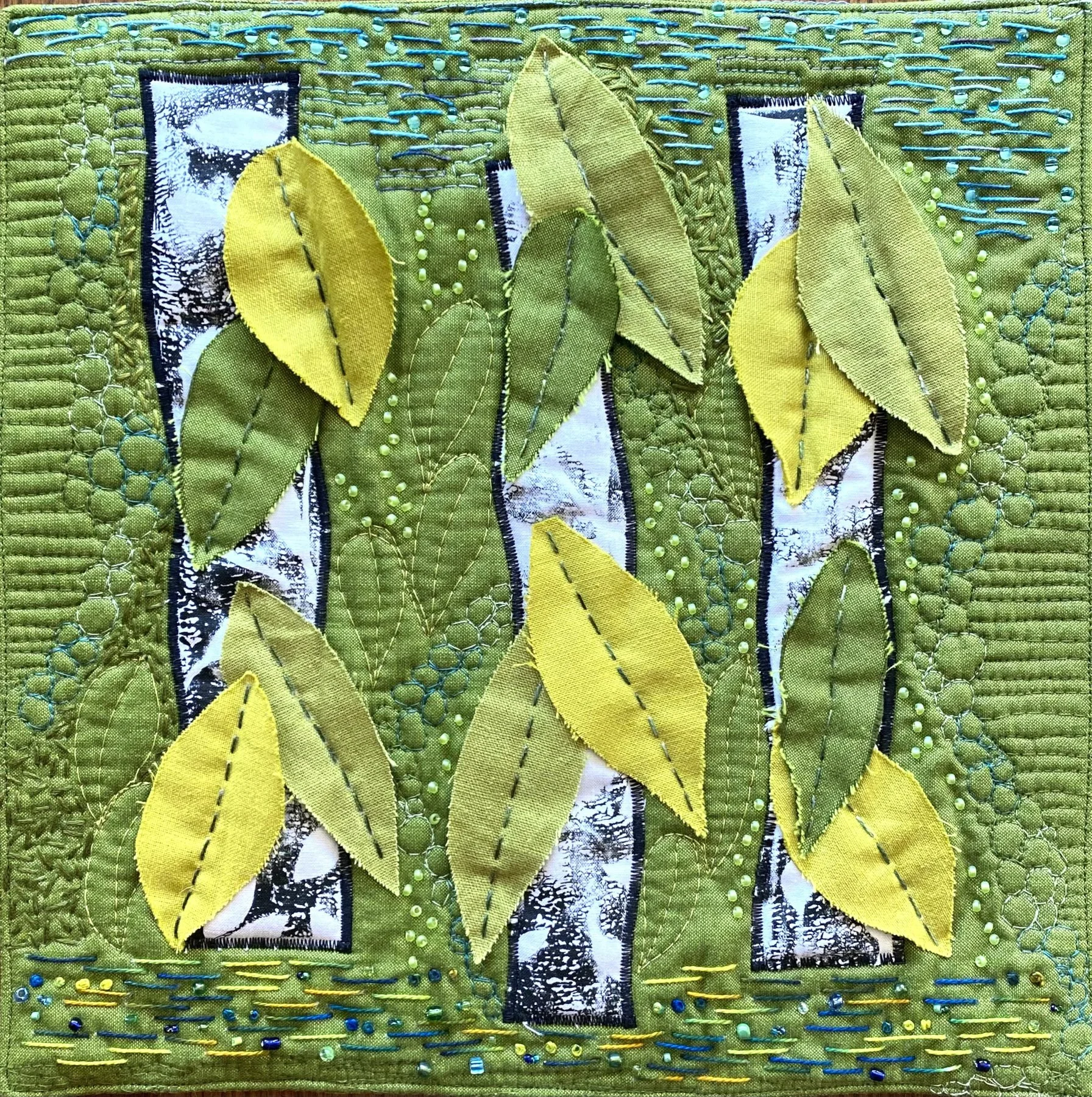
Artist’s Blog
It’s The Light
August 6, 2025
I was recently asked to consider a quote by Amy Krouse Rosenthal: “Pay attention to what you pay attention to.” This was in the context of looking at your art practice and think about what keeps attracting your artistic attention.
So I thought about it and I believe that it is light that most often gets my attention, and in many different ways. It might be in the form of shadow, reflection, color, highlight or darkness that inspires a piece of art—for me it is often in a less intentional but then ultimately representative way. In other words, I don’t always start a piece with the idea of representing a specific kind of light, but in the end it feels like something I have observed and appreciated and I see that I have subconsciously portrayed it in the work. Because I absorb, observe and revere nature and the way light plays throughout a day in so many ways, it is natural for it to manifest in my art.
I use various textural elements in my work that allow light to absorb or reflect differently depending on the roughness, smoothness, angles, hardness, transparency or dimension of the materials that are incorporated. A piece of smooth quilting cotton has a different textural look and visual feel than canvas, linen, sheer organza or cheesecloth. A polished stone bead or a dangling string of beads has dimension and it reflects light. It appears differently to the viewer as the light changes or as your perspective on it changes—maybe as you walk by it when it is hanging.
I also add visual texture to my art with free motion machine quilting and hand embroidery which adds lines, curves, highs and lows, highlights and shadows. The stitching creates movement and flow but it also makes an almost sculptural relief texture on the surface of the quilt. Sculpture explores the relationship between form, space and balance, and I love being able to portray that aspect of art through my wall hangings.
Beads create a very different feeling than cloth and I love the juxtaposition of the mediums when combined in my art quilts--the soft and hard, absorbing and reflecting. Beads add an element to fiber art that is in contrast to the cloth and yet so complimentary. They can be metal/wire, stone, horn, bone, glass, ceramic, plastic or wood and each material and shape treats light differently. Another way I like to add texture is through the couching of yarns (zigzag stitching over them to attach them to the edge or surface of the quilt). I love choosing nubby, slubby yarns with irregular color changes and lots of interest. Sometimes I twist multiple yarns together for more of an impact and to incorporate colors I want to emphasize in the piece.
Another way light is represented in my work is through three dimensional elements that are not beads but a manipulation of fabric elements to make them stand away from the flat quilt top. I often use some kind of heavyweight stabilizer that adds stiffness to a shape and allows it to be curved or otherwise shaped to lift off of the surface. An example of using that technique to create shadow and depth is my piece called “A Montana Blue Ribbon”. It is an abstract representation of trout swimming in a clear Montana stream and moving through the shadows of logs, branches and plants in the water. Those shadows are what keeps the fish safe and allows them to feed and survive without being easily seen by predators. The sun creates shadows and highlights in the water which creates a camouflage habitat for the trout. This piece started with some ice dyed fabrics, including cheesecloth, and then was “built” from there. The fish are all cut from the same commercial print fabric with very little fussy cutting. The randomness of color and value in that particular fabric adds to the feeling of light and shadow that penetrates the surface of the water and allows the trout to “blend” with their environment. This was a very fun and exciting piece to create and the dimensional elements made one of my abstract works become a little more representational.
One example of how light fascinates me in nature is the way leaves flutter and cause “light flecks”-- short, moving patches of sunlight. It changes the light environment within a canopy of trees from a static pattern of sun and shade into a more dynamic and evenly distributed one. This is said to be beneficial to plants for photosynthesis and carbon gain. Something as simple as a fluttering leaf has an impact on the whole environment in which it exists. I often notice small window shaped shadows on my bedroom wall that are reflecting the fluttering Cottonwood or Willow leaves outside between the rising sun and the trees in my back yard. It is mesmerizing to watch on my wall, and yet is merely a shadowy reflection. Aspen trees are one of my favorites and not only do the leaves have a beautiful fluttering movement but they also have a sound—“quaking aspen”—that is pleasant and calming. I can just look at an image of aspen and it takes me to a place and time when I enjoyed the sight and sound of those trees.
These are only a few of the many ways that I have represented light in my fiber art. Whether the light is waning or waxing, it is always inspiring and influencing my art.





